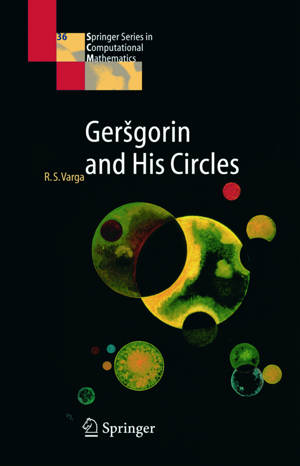
- Afhalen na 1 uur in een winkel met voorraad
- Gratis thuislevering in België vanaf € 30
- Ruim aanbod met 7 miljoen producten
- Afhalen na 1 uur in een winkel met voorraad
- Gratis thuislevering in België vanaf € 30
- Ruim aanbod met 7 miljoen producten
Zoeken
Omschrijving
TheGer? sgorin CircleTheorem, averywell-known resultin linear algebra today, stems from the paper of S. Ger? sgorin in 1931 (which is reproduced in AppendixD)where,givenanarbitraryn×ncomplexmatrix,easyarithmetic operationsontheentriesofthematrixproducendisks,inthecomplexplane, whose union contains all eigenvalues of the given matrix. The beauty and simplicity of Ger? sgorin's Theorem has undoubtedly inspired further research in this area, resulting in hundreds of papers in which the name "Ger? sgorin" appears. The goal of this book is to give a careful and up-to-date treatment of various aspects of this topic. The author ?rst learned of Ger? sgorin's results from friendly conversations with Olga Taussky-Todd and John Todd, which inspired me to work in this area.Olgawasclearlypassionateaboutlinearalgebraandmatrixtheory,and her path-?nding results in these areas were like a magnet to many, including this author! It is the author's hope that the results, presented here on topics related to Ger? sgorin's Theorem, will be of interest to many. This book is a?ectionately dedicated to my mentors, Olga Taussky-Todd and John Todd. There are two main recurring themes which the reader will see in this book. The ?rst recurring theme is that a nonsingularity theorem for a mat- ces gives rise to an equivalent eigenvalue inclusion set in the complex plane for matrices, and conversely. Though common knowledge today, this was not widely recognized until many years after Ger? sgorin's paper appeared. That these two items, nonsingularity theorems and eigenvalue inclusion sets, go hand-in-hand, will be often seen in this book.
Specificaties
Betrokkenen
- Auteur(s):
- Uitgeverij:
Inhoud
- Aantal bladzijden:
- 230
- Taal:
- Engels
- Reeks:
- Reeksnummer:
- nr. 36
Eigenschappen
- Productcode (EAN):
- 9783540211006
- Verschijningsdatum:
- 11/08/2004
- Uitvoering:
- Hardcover
- Afmetingen:
- 168 mm x 15 mm
- Gewicht:
- 496 g

Alleen bij Standaard Boekhandel
+ 279 punten op je klantenkaart van Standaard Boekhandel
Beoordelingen
We publiceren alleen reviews die voldoen aan de voorwaarden voor reviews. Bekijk onze voorwaarden voor reviews.








